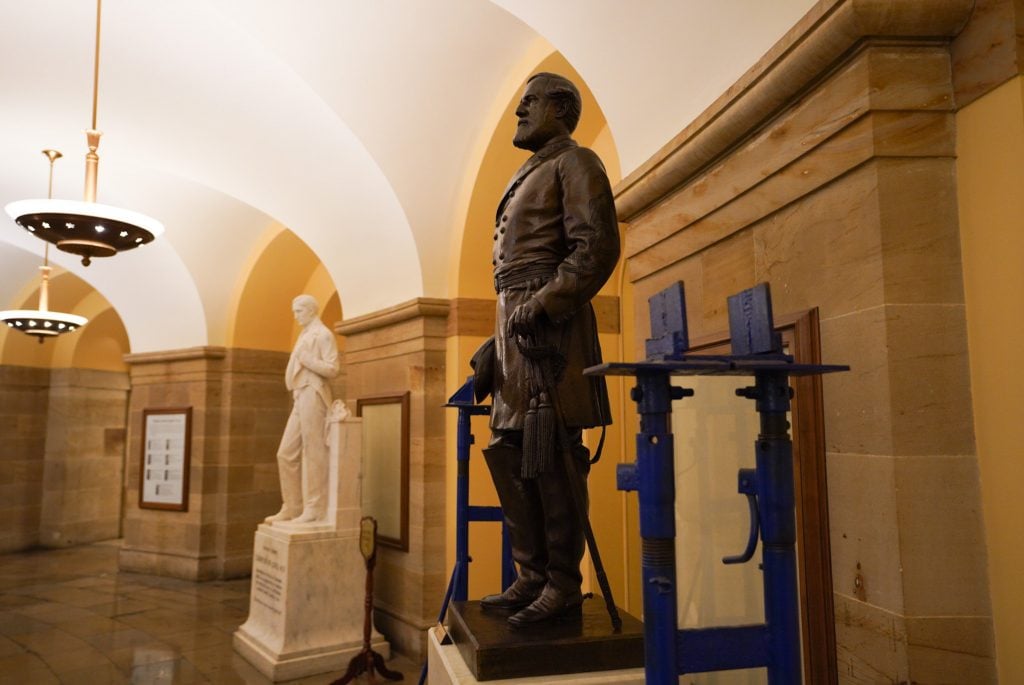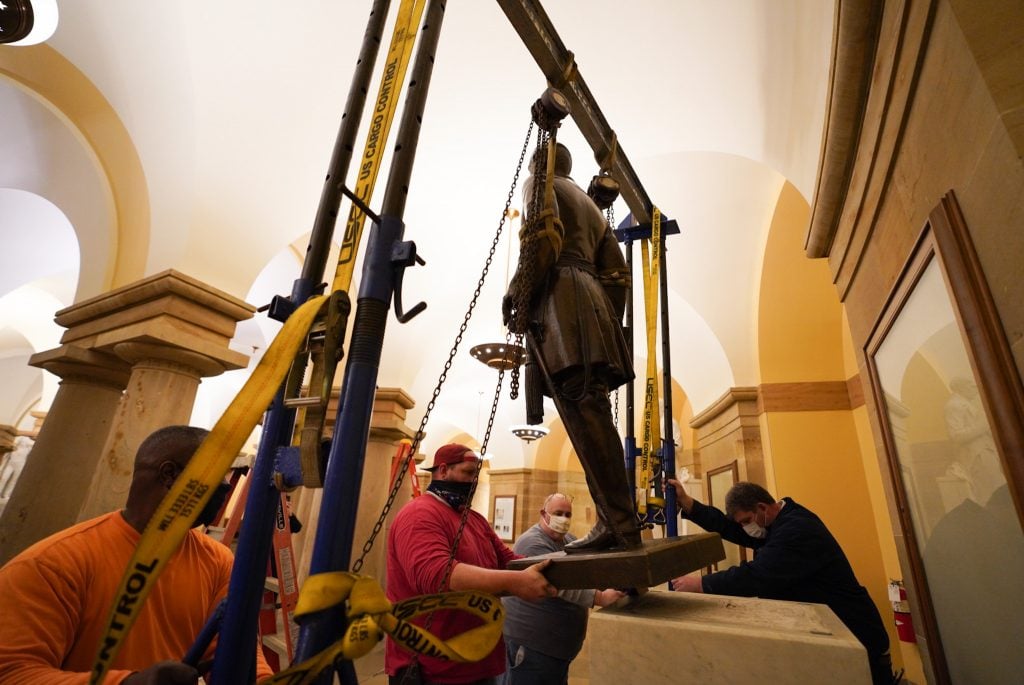Politics
A Statue of Civil Rights Activist Barbara Rose Johns May Soon Replace One of Robert E. Lee in the US Capitol Building
The new statue would commemorate a key figure in the Brown vs. Board of Ed Supreme Court decision.

The new statue would commemorate a key figure in the Brown vs. Board of Ed Supreme Court decision.

Taylor Dafoe

Early this morning, workers removed a statue of Confederate General Robert E. Lee from the US Capitol building in Washington, DC.
Erected in 1909, the sculpture was one of two representing Virginia in the building’s National Statuary Hall, where every state gets two statues. Lee’s figure was located in the Crypt, where 13 statues represent the original 13 colonies. It will now be moved to the Virginia Museum of History and Culture in the state capital of Richmond.
This summer, Virginia Governor Ralph Northam established an eight-person commission tasked with removing the sculpture and identifying a replacement. The latter step came last week as the commission nominated civil rights hero Barbara Rose Johns, an activist who fought for the desegregation of schools in the early 1950s, as Virginia’s next honoree in Statuary Hall.
“The Confederacy is a symbol of Virginia’s racist and divisive history, and it is past time we tell our story with images of perseverance, diversity, and inclusion,” Governor Northam said in a statement. “I look forward to seeing a trailblazing young woman of color represent Virginia in the US Capitol, where visitors will learn about Barbara Johns’s contributions to America and be empowered to create positive change in their communities just like she did.”
Before an artist can be recruited to create the new sculpture, the Johns proposal needs to be approved by the state’s General Assembly, which begins its next session January 13. Northam has earmarked $500,000 for the project in his proposed budget for 2021.

Virginia’s statue of Robert E. Lee in the U.S. Capitol. Photo: Jack Mayer, Office of Governor Northam.
In 1951, at the age of 16, Johns organized a student strike at her school to protest the inequality of conditions at Black and white educational facilities in the state. After the NAACP filed a lawsuit, the case was reviewed by the Supreme Court in Brown v. Board of Education of Topeka, wherein “separate but equal” facilities were ruled unconstitutional.
“When I think of Barbara Johns, I am reminded of how brave she was at such a young age,” Jeion Ward, a member of the statue commission, said in a statement. “It’s time for us to start singing the songs of some of the Virginians who have done great things that have gone unnoticed. This is a proud moment for our commonwealth, and I am humbled to have been a part of it.”
Though the capital sculpture has long been the source of debate, it’s not even Virginia’s most controversial statue of Lee. That one—a 14-foot-tall bronze monument that has come to symbolize the fight over historical statuary across the country—stands on Richmond’s Monument Avenue.
Targeted many times by protestors in the Black Lives Matter era, including this summer following the murder of George Floyd, the Lee sculpture is now the only remaining Confederate memorial on Monument Avenue after demonstrators toppled four others this summer. Following a months-long legal battle, it is now slated for removal in early 2021.